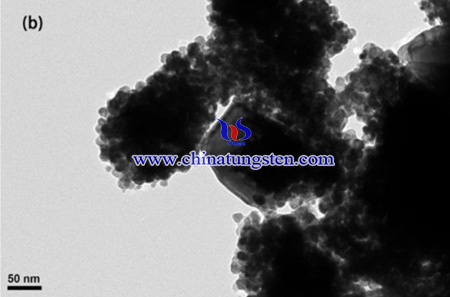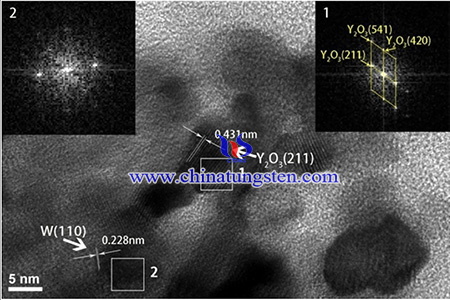Preparation of Nanosized W-Y2O3 Alloy with APT by An Improved Wet Chemical Method
- Details
- Category: Tungsten Information
- Published on Thursday, 17 June 2021 04:25
Because of many superior physics properties such as high melting point, low sputtering rate, high thermal conductivity, low tritium inventory, high strength at elevated temperatures and low thermal expansion, tungsten-based materials are a unique choice for several applications. However, serious embrittlement in several aspects including low-temperature brittleness, recrystallization brittleness and irradiation induced brittleness is the main drawback to limit the application of tungsten-base materials, especially as the structural materials. In order to alleviate such embrittlement, some tungsten-base alloys with fine grains have been developed by previous studies.

The synthesis process of W-Y2O3 alloy is as below: At first, 2.57 g of yttrium nitrate hydrate (Y(NO3)3·6H2O) and 3 g of Polyvinyl Pyrrolidone (PVP, K17) were dissolved in 120 mL water under the condition of mechanical stirring and ultrasonic process. Then 20 g of ammonium paratungstate (NH4)10[H2W12O42]·4H2O (APT) was added in the solution. Ten minutes later, 20 mL of nitric acid (65%–68%) was added and continued to react for 30 min. After that, 150 mL of anhydrous ethanol was added in the formed suspension. After reacting for another 3 h, the suspension was filtered and the obtained precipitate was washed with water and anhydrous ethanol for four times to remove the PVP as much as possible and then put in vacuum drying oven at 60 °C to dry for 24 h.
Thermal processing (calcintion and reduction) of the as-prepared composite powder was carried out in a tube furnace. In order to further remove the residual PVP completely, the composite powder was firstly calcined at 550 °C for 2 h in flowing air. Then two isothermal steps, 600 °C for 3 h and 800 °C for 6 h, was chosen to reduce the composite powder under a controlled flow of dry hydrogen gas and the heating rate was 5 °C/min. Finally, the powder was cooled down to room temperature in the tube furnace under a flow of hydrogen gas and then kept in glove box filled with pure argon gas.

The as-obtained W-Y2O3 composite powder precursor was sintered using a SPS machine “Dr. Sinter 1050” (Sumitoma coal mining company). To begin with, the powder was pressed in a graphite die with inner diameter of 12 mm by manual. Then the die was placed in the SPS chamber. The temperature was firstly ramped at 600 °C and held for 2 min. With two isothermal steps, 1200 °C for 2 min and 1400 °C or 1 min, two-step sintering was applied to consolidate one of the samples (denoted by sample 1). 1200 °C for 2 min and 1600 °C for 0.5 min was chosen to consolidate another sample (denoted by sample 2). The pressure was increased to 50 Mpa before the outset of final sintering temperature and maintained until the end of sintering. The ramping rate was 100 °C/min.
In conclusion, Nanocrystalline Y2O3 doped tungsten composite powder precursor was successfully synthesized by an improved wet chemical method, where polymeric surfactant PVP was added as well as the ultrasonic treatment was introduced. The average size of tungsten grains is 10.7 nm and the distribution of grain size is quite narrow for the precursors after reduction. The relative density of the sample is just 96.03% that can be further enhanced by increasing the sintering pressure or extending the holding time at low-temperature stage.
- APT Manufacturer & Supplier, Chinatungsten Online: ammonium-paratungstate.com
- Tungsten News & Prices of China Tungsten Industry Association: www.ctia.com.cn
- Molybdenum News & Price: news.molybdenum.com.cn
- Tel.: 86 592 5129696; Fax: 86 592 5129797; Email: sales@chinatungsten.com



 sales@chinatungsten.com
sales@chinatungsten.com